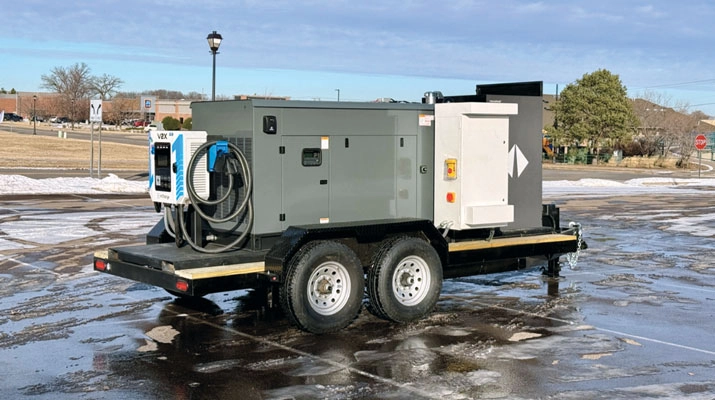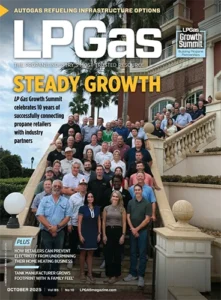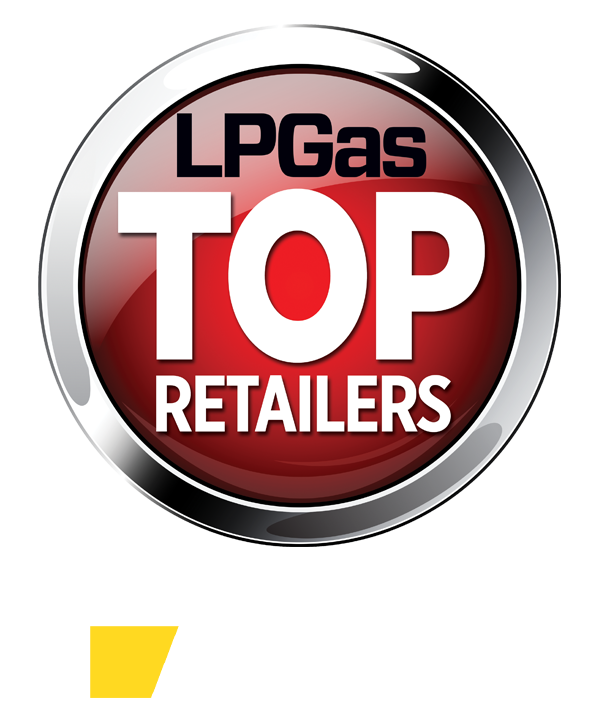Avoid issues with wheel stops and temperature correction
I have two lesser-known topics to consider for winter activities. The first is proper placement of wheel stops when a bobtail is parked on a hill with the roadway covered in snow or ice. The second is the effect of automatic temperature correction on expected propane inventories.

▶ Slide prevention on icy, sloped roads
A major marketer had accidents with bobtails making deliveries when parked on a hill and the road was icy or snow-covered. Wheel stops were deployed on the rear axle wheels on the downhill side. They found that wheels locked by the parking brake pushed the wheel stops down the road, failing to prevent the truck from moving. The cause was probably a combination of engine and pump vibration, tires warmed from being driven and/or compression of the snow or ice. The marketer reports that there were instances of property damage, rollovers, pull-aways, product release, injury and death.
They did some experiments and determined that the wheel stops were effective on ice and snow only when the wheels rode up onto the stops, pushing them into the ice or snow. To do this, the wheels must be able to turn freely. Placing the stops on the downhill side of the front wheels solved the problem.
The type of wheel stop also made a difference. Only steel or aluminum stops have the protrusions to dig into the surface. Thus, they must be used as intended with the protrusions pointed down. Rubber and wooden wheel stops don’t have these protrusions and, thus, have nothing to dig into the icy surface.
The marketer made a strong point about being sure to point the front wheels straight downhill or uphill so the wheels can roll directly in the direction of travel that gravity dictates. Otherwise, the wheels will likely not climb the wheel stops, forcing them to dig in.
▶ How automatic temperature compensation affects inventory
Delivery of LP gases through meters rated at more than 20 gallons per minute must have automatic temperature compensation. However, some measurements for bobtails are temperature compensated and some are not. Loading the bobtail based on the volume gauge is not temperature compensated. Loading it by weight is compensated. Unloading it by way of deliveries through a temperature-compensated meter is, well, compensated. Temperature compensation is based on the volume of a “true” gallon at 60 degrees F.
Let’s do a quick calculation. If you load a 3,500-gallon water capacity cargo tank to 80 percent, it will contain 2,800 gallons. If the propane is at 60 degrees F, it will have the defined energy content of 2,800 gallons of propane. Instead, consider loading it when the product is at 30 degrees. Table F.3.3 of NFPA 58 says that the 30-degree gallon of energy equivalent propane is 95.5 percent the size of the gallon at 60 degrees. Thus, the cargo tank is holding the energy equivalent of 2,931.6 gallons of propane, 131.6 more gallons than was loaded if only volume is considered. If all the deliveries from that tank are delivered at 30 degrees, then your delivery tickets will show 2,931.6 gallons were delivered when only 2,800 gallons were loaded.
Do that for a month (20 working days) with, say, two loads a day, each with five trucks, and you’ll pump 26,320 temperature-compensated gallons more than you loaded of non-temperature-compensated product into the trucks. That’s almost 10 more truckloads sold than were loaded. This assumes that the product temperature stays at 30 degrees all month.
The flip side is that you’ll “lose” gallons when you deliver temperature-compensated gallons when the product temperature is higher than 60 degrees F. It’s unlikely you will have an equal effect delivering at warmer temperatures to exactly make up the difference. This may show that you had an unexplained gain or loss of product over the year. Overall, you probably didn’t. Most transports are loaded with temperature-compensated product and deliver that entire content to you, billing accordingly.
Consider this when you’re doing your end-of-the-month bookkeeping.
Richard Fredenburg is an LP gas engineer at the North Carolina Department of Agriculture and Consumer Services, Standards Division. He is also a member of NFPA’s Technical Committee on LP Gases. Contact him at richard.fredenburg@ncagr.gov or 984-236-4752.
NOTE: The opinions and viewpoints expressed herein are solely the author’s and should in no way be interpreted as those of LP Gas magazine or any of its staff members.
Featured homepage image: bluekite/E+/Getty Images
Related Articles
What the LP Gas Code says about installing, testing cathodic protection systems















